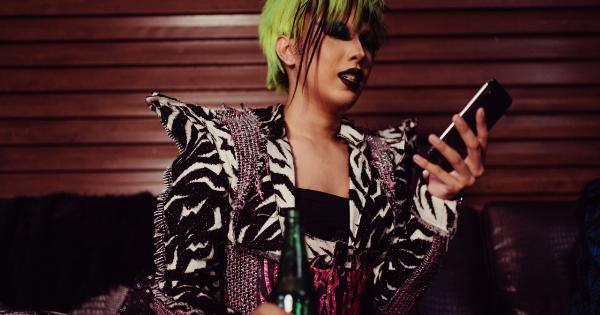The Fifty Shades of Grey trilogy by E.L. James took the literary world by storm, capturing the imaginations of millions of readers worldwide.
The books, known for their explicit content and portrayal of a BDSM relationship, became a cultural phenomenon that sparked controversy and intrigue in equal measure. While critics dismissed the trilogy as poorly written erotica, fans defended it as an exploration of desire and an empowering story of sexual liberation.
The Popularity of Fifty Shades
Despite the divergent opinions, there is no denying that Fifty Shades appealed to a massive audience. The books quickly topped bestseller lists and sold over 150 million copies worldwide, making E.L. James one of the most successful authors of all time.
So, what exactly drew readers in?.
One possible explanation for the trilogy’s popularity is its ability to tap into our hidden desires and fantasies.
The depiction of a taboo and unconventional relationship between Anastasia Steele and Christian Grey allowed readers to explore their wild side vicariously through the characters.
The series offered a safe space for readers to explore their own boundaries and delve into the world of BDSM.
Although the books are often criticized for their inaccurate portrayal of BDSM and consent, they undeniably sparked conversations about sexuality and opened doors to discussions that were previously considered taboo.
Research Sheds Light
As the debate surrounding Fifty Shades raged on, researchers began to explore the impact of the books on readers and their relationships.
A study conducted by Amy Bonomi, a professor of human development and family studies at Michigan State University, found some intriguing results.
Bonomi surveyed 655 women aged 18 to 24, exploring their experiences with abusive relationships and their consumption of Fifty Shades of Grey.
The study found that women who read all three books in the series were at a higher risk of engaging in unhealthy behaviors and had an increased likelihood of having a verbally abusive partner.
While these findings may seem alarming, it is essential to approach them with caution. The study only establishes a correlation and does not prove causation.
It is possible that women already predisposed to abusive relationships were more likely to gravitate towards the books.
On the flip side, the study also revealed positive outcomes. Women who reported enjoying the books showed increased sexual empowerment and a stronger sense of agency in their relationships.
This suggests that Fifty Shades can serve as a catalyst for women to explore and embrace their desires.
Fiction or Reality?
One of the key debates surrounding Fifty Shades is whether the books accurately depict the world of BDSM or if they perpetuate harmful stereotypes.
BDSM communities and practitioners criticized the series for romanticizing abusive behavior and misrepresenting consent.
It is crucial to remember that Fifty Shades is a work of fiction and should not be considered a guide to BDSM practices.
The BDSM portrayed in the books is dramatized and not reflective of the community’s core principles of trust, communication, and consent.
However, the books undeniably sparked curiosity about BDSM and introduced many readers to a previously unfamiliar world. This newfound interest led to an increase in the popularity of BDSM-themed erotica and a surge in sex toy sales.
Exploring Sexual Boundaries
One of the central themes of Fifty Shades is the exploration of sexual boundaries within a relationship. The books depict a journey of sexual discovery as Ana and Christian navigate the complexities of their unconventional dynamic.
Beyond the explicit content, the books delve into themes of power dynamics and trust. They push readers to question societal norms and challenge the idea that traditional relationships are the only romantic ideal.
By presenting a relationship that is unapologetically sexual and challenging traditional gender roles, Fifty Shades created conversations about sexual empowerment and the importance of open communication in intimate relationships.
The Impact on Popular Culture
Fifty Shades not only impacted the literary world but also had a significant influence on popular culture. The books’ success led to a blockbuster film franchise, further cementing the trilogy’s presence in mainstream media.
However, the films faced their fair share of criticism as well. Many argued that the adaptation failed to capture the complexities and nuances of the books, reducing the story to superficial bondage scenes.
Despite the mixed reception, the Fifty Shades phenomenon changed the landscape of popular culture.
It opened doors for more explicit and boundary-pushing content in mainstream media, challenging societal norms and pushing the boundaries of what is considered acceptable.
The Legacy of Fifty Shades
Love it or hate it, Fifty Shades left an indelible mark on contemporary literature and popular culture.
It brought topics of desire, sexuality, and kink into the mainstream consciousness, sparking conversations about sexual liberation and the importance of consent.
While the books may have their flaws and critics, they undeniably opened up new avenues for exploration and discussion. The trilogy challenged societal taboos and encouraged readers to question their own desires and boundaries.
Ultimately, the impact and legacy of Fifty Shades extend far beyond its pages. It serves as a reminder that literature, even controversial or poorly written, has the power to ignite conversations and challenge societal norms.
It encourages readers to embrace their wild side and explore the complexities of desire.




























